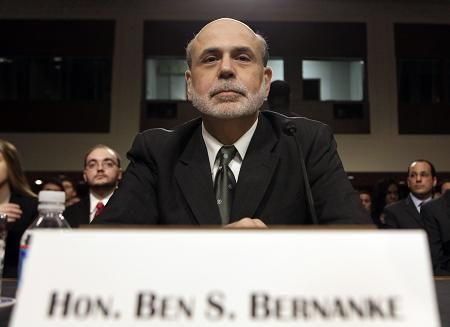Fed Minutes Show Members Considering New Ambitious Tack

After the powerful rate-setting committee of the U.S. Federal Reserve announced it would be staying the course following its latest monthly meeting in October, the view from the experts was that America’s central bankers were likely taking a break. They had, after all, announced a massive program of open-ended asset purchases the month prior, and would likely postpone taking up any new initiatives until they could observe how their decisions were working.
Perhaps, pundits opined, they were also waiting to see what would happen on Election Day, when a win by the presidential candidate who was advocating for tighter monetary policy could mean an end to their chosen route (and maybe even cost a few of them their job).
But as minutes from that Oct. 23-24 meeting, released Wednesday afternoon, show, nothing could have been further from the truth.
The main news from the released documents is that Federal Reserve committee members are seriously consider changing their approach to announced expectations, announcing an explicit “threshold” for inflation and unemployment that the Fed will use to guide its decisions on whether or not to ease. The idea is widely attributed to Charles Evans, the president of the Federal Reserve Bank of Chicago, who is seen as generally favoring loose monetary policy.
Members of the Federal Open Market Committee “generally favored the use of economic variables” rather than specific dates, when guiding markets as to the direction of Fed policy, the minutes noted. The idea behind that approach is that it would give specific “thresholds” that would indicate the Fed would take action, rather than the current system, where the Fed simply says it foresees the need to keep current monetary policy up until a certain point in time.
“Many participants were of the view that adopting quantitative thresholds could, under the right conditions, help the Committee more clearly communicate its thinking about how the likely timing of an eventual increase in the federal funds rate would shift in response to unanticipated changes in economic conditions,” the minutes of the meeting read.
Even more tellingly, the committee seemed poised to adopt the idea at the meeting, but was mainly concerned not with its intellectual soundness, but with the possibility it would be misunderstood by the public.
“Several participants” said they were concerned the announcement would make it seem like the Fed was only focusing on unemployment and inflation “when the Committee in fact uses a wide range of information.”
An interesting discussion occurred on the dynamics of calling any specific figures “thresholds,” rather than “triggers” or “targets,” so as to dispel the notion hitting those figures would prompt an immediate change of course in monetary policy.
But whatever their reservations, it seems increasingly likely this is the path the Fed will take. A speech by Vice Chairman Yellen Tuesday went deep into the weeds of how the Fed could go for more explicit targeting.
And people will be listening closely to a speech by Chairman Ben Bernanke today for further hints.
But what is known now is the Fed members did much more than sit on their laurels during the last meeting. The rest, only time, and the economy, will tell.
© Copyright IBTimes 2024. All rights reserved.





















